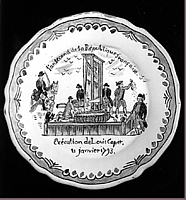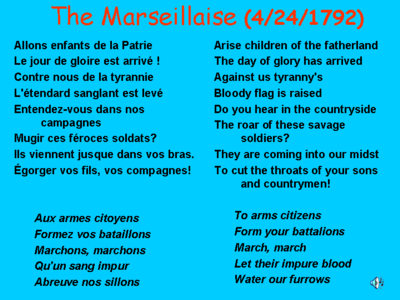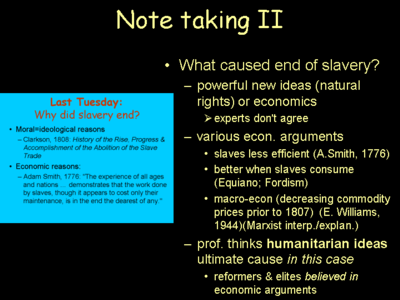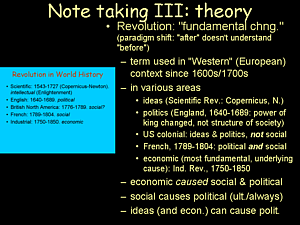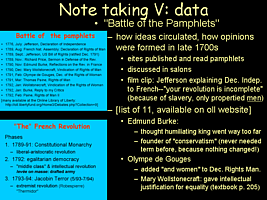6.
Images & Symbols of the French Revolution (back
to top)
Finally, I showed a series of images that were used during the French
Revolution. These are available from the Center for History and the New
Media at George Mason University (chnm
French Rev. images page).
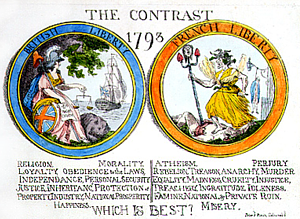 |
This
1793 image contrasts the calm and controlled nature of British liberty
with the chaotic and violent (severed head and phyrgian caps on
a trident, hanging in background) nature of the liberty practiced
during the first phase of the French revolution.
This
artist thought things had gotten way out of hand in France. (source
page) |

|
"Republican
Calendar"
This poster
includes the Republic’s new calendar under an image of Marianne,
another symbol of the Republic as well as the ultimate expression
of revolutionary liberation from the past. Yet without her pike,
calmly reading a book with a cupid around, she is more the mother
of this new system than a warrior for liberty, as in other prints.
(source
page)
|
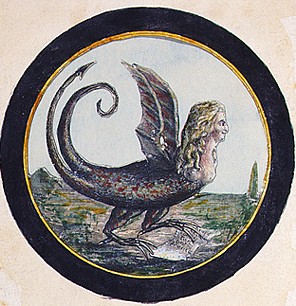
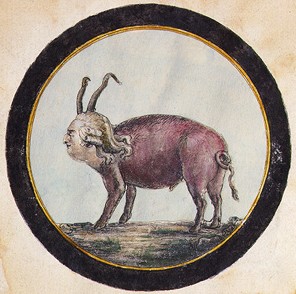
|
Marie Antoinette as a Serpent, Louis as Pig (source
page)
The Queen, never popular to begin with in France, also bore the
brunt of popular anger in 1792, as seen in these images of the King,
Queen, and elsewhere the entire royal family, as animals. One wonders
if this dehumanization of the King and Queen might explain why they
became such lightning rods for criticism and, moreover, why the
entire royal family would eventually be excluded from any protection
under law, at the very moment that a constitution ensuring the rights
of all people was being put into effect.
It was a very new and radical idea to portray a king--by Divine
Right--as no more than an animal, and a vile one at that. This is
evidence of a huge paradigm shift in people's minds.
|
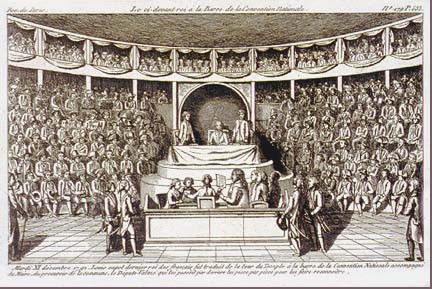
|
Image of the King on Trial
When he was charged, the King might have refused to participate
on the grounds that the Constitution promised his immunity. But
this defense, he knew, was useless and he elected to stand on his
record. Among his attorneys was the distinguished old regime administrator
Chrétlen–Guillaume de Malesherbes. In the end, political
necessities and the King’s own actions led to the inevitable result:
guilty and execution. |
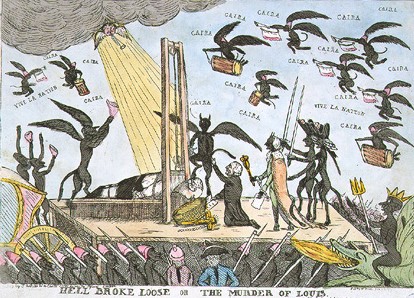
|
"Hell broke loose or the murder of Louis."
The 1793 English broadsheet says, in effect: Do not take your God-given
rulers lightly, or look what might happen! |
|
